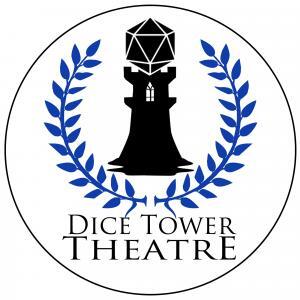Tenser’s Floating Disk
Wizard - 1 Level Spell
School: Conjuration
Casting Time: 1 Action
Range: 30 ft
Components: Verbal, Somatic, and Material
Duration: 1 Hour
Attack/Save: None
Reference: PHB 282
Ritual
This spell creates a circular, horizontal plane of force, 3 feet in diameter and 1 inch thick, that floats 3 feet above the ground in an unoccupied space of your choice that you can see within range. The disk remains for the duration, and can hold up to 500 pounds. If more weight is placed on it, the spell ends, and everything on the disk falls to the ground.
The disk is immobile while you are within 20 feet of it. If you move more than 20 feet away from it, the disk follows you so that it remains within 20 feet of you. It can move across uneven terrain, up or down stairs, slopes and the like, but it can’t cross an elevation change of 10 feet or more. For example, the disk can’t move across a 10-foot-deep pit, nor could it leave such a pit if it was created at the bottom.
If you move more than 100 feet from the disk (typically because it can’t move around an obstacle to follow you), the spell ends.
The material component for this spell is a drop of mercury.
Tenser’s Floating Disk would fall in the Common Spell Scroll Cost in 5e – Roughly 50-100gp.
My Comments: Alongside other famous player character wizards like Evard, Mordenkainen (Gary Gyagax’s own character for many years), and Bigby, the wizard Tenser started out in life as a player’s high level wizard character in the earliest days of OD&D. Specifically, he was the magic user played by Gary Gygax’s son, Ernest (of which Tenser is an anagram).
That means that, for almost fifty years, wizards have been conjuring this shimmering disk of force from the aether, making Floating Disk just as much a part of the history of D&D as spells like Fireball and Magic Missile.
Most new players — myself included — read the entry for Floating Disk and immediately start thinking of cool applications for the spell, like platforming across chasms, riding around on levitating thrones, and doing sweet kickflips over a goblin’s head.
This is obviously not how Floating Disk works, and often leads to modern D&D players ditching this spell as soon as possible because, well, it’s not actually that clear what it’s for.
Let me explain.
 D&D 5e is a game about being medieval fantasy-themed superheroes. It’s a game about high octane adventuring focused on narrative objectives, killing enemies, and occasionally looting cool stuff. In that order.
D&D 5e is a game about being medieval fantasy-themed superheroes. It’s a game about high octane adventuring focused on narrative objectives, killing enemies, and occasionally looting cool stuff. In that order.
You hack and slash your way through the goblin caves, kill the boss, rescue the blacksmith’s son, and head back to town to level up. The bugbear boss might have a +1 Magic Sword and a fistful of gold coins, or they might not, but that’s not really the point because narrative milestones and killing monsters are how you gain experience. Cool loot and gold are just the cherry on top.
D&D in the 1970s and 80s was a very different beast. Characters were much more driven by the desire to accumulate wealth than modern heroes because without gold, there was no leveling up. OD&D was a game about exploration and accumulation where the priorities of narrative objectives, monster killing, and loot were more or less reversed when compared to 5e.
Monsters gave you some xp and maybe a narrative objective might come with a little bonus experience if your DM was feeling kind. But gold was the real objective because without it you couldn’t level up. In 5e, 100 gold pieces is reason enough to get out of bed in the morning and go fight a Black Pudding 1v1 because 100 gold is kind of all you need to live comfortably for months at a time. In OD&D, 1 gold piece equaled 1 experience point and every character in the party needed a good few thousand experience points to even reach 2nd level.
Add to this the fact that Gary Gygax was notorious handing out 1,000 gp worth of treasuring entirely in copper pieces that didn’t count as xp until it was safely back in town and you start to get an idea why a spell that lets you carry an extra few hundred pounds of loot was worth its weight in gold to players who needed to haul awkwardly large cursed idols, piles of silver and copper, or other such loot that was bigger, heavier, and way more important than 5e players need to deal with today.
Now, I realize that none of this actually answers the question: Why would I ever pick Tenser’s Floating Disk as a 5e player?
Obviously, in a world where you don’t need to hoard hundreds of pounds of metal back to town in order to level up, the spell doesn’t have the same allure as it did in previous editions. However, if you’ve ever needed to move something big and heavy from one place to another without incapacitating one or more party members, this is how you do it.
Need to get that cursed idol home? Floating Disk. How about the party member who was petrified during the Medusa fight? Floating Disk. What if you’re at the bottom of a pit that’s filling up with acid or lava? Floating Disk ride to the roof.
Just because this spell doesn’t work the way you want it to, and just because its original purpose is less valuable than it once was, being able to cart around 500 lbs with your hands free is nothing to sniff at for the price of a 1st level spell slot.
Or nine out of ten times you could just get a donkey.


I feel like it should be mentioned that Tenser’s Floating Disk has an hour duration, so it won’t last all day. Except, it will! It’s a Ritual spell, so as long as you strategically set aside 10 minutes at the end of every hour to recast it, you’ll be golden.
Mind you, so DMs may rule that the first spell ends and then the next begins, meaning your piles of treasure and loot may fall to the ground and have to be re-packed.
Of course, that’s never a worry for a donkey.
Just be ready to have fun pushing that donkey up a ladder when you have to climb out of the sewers.